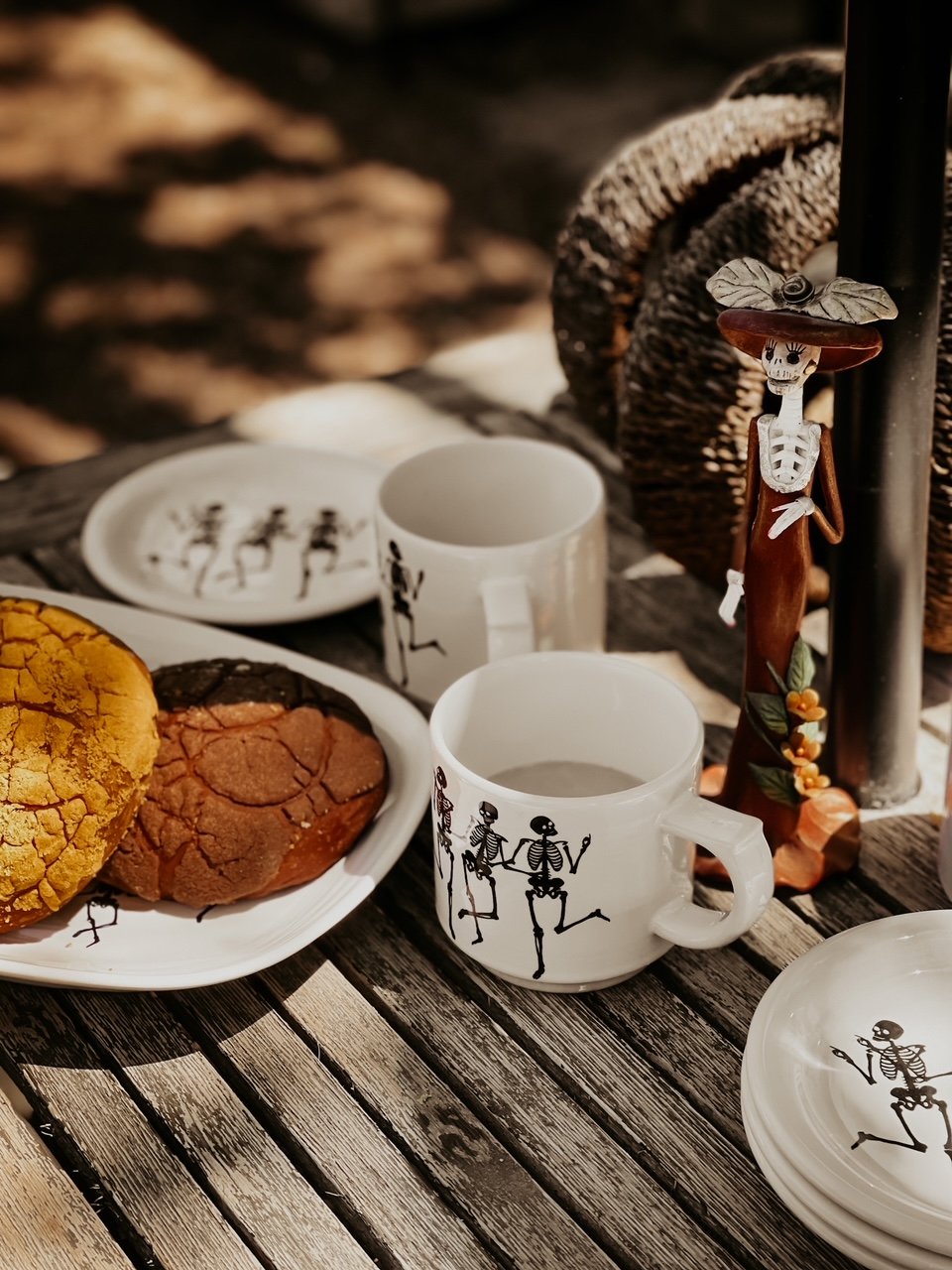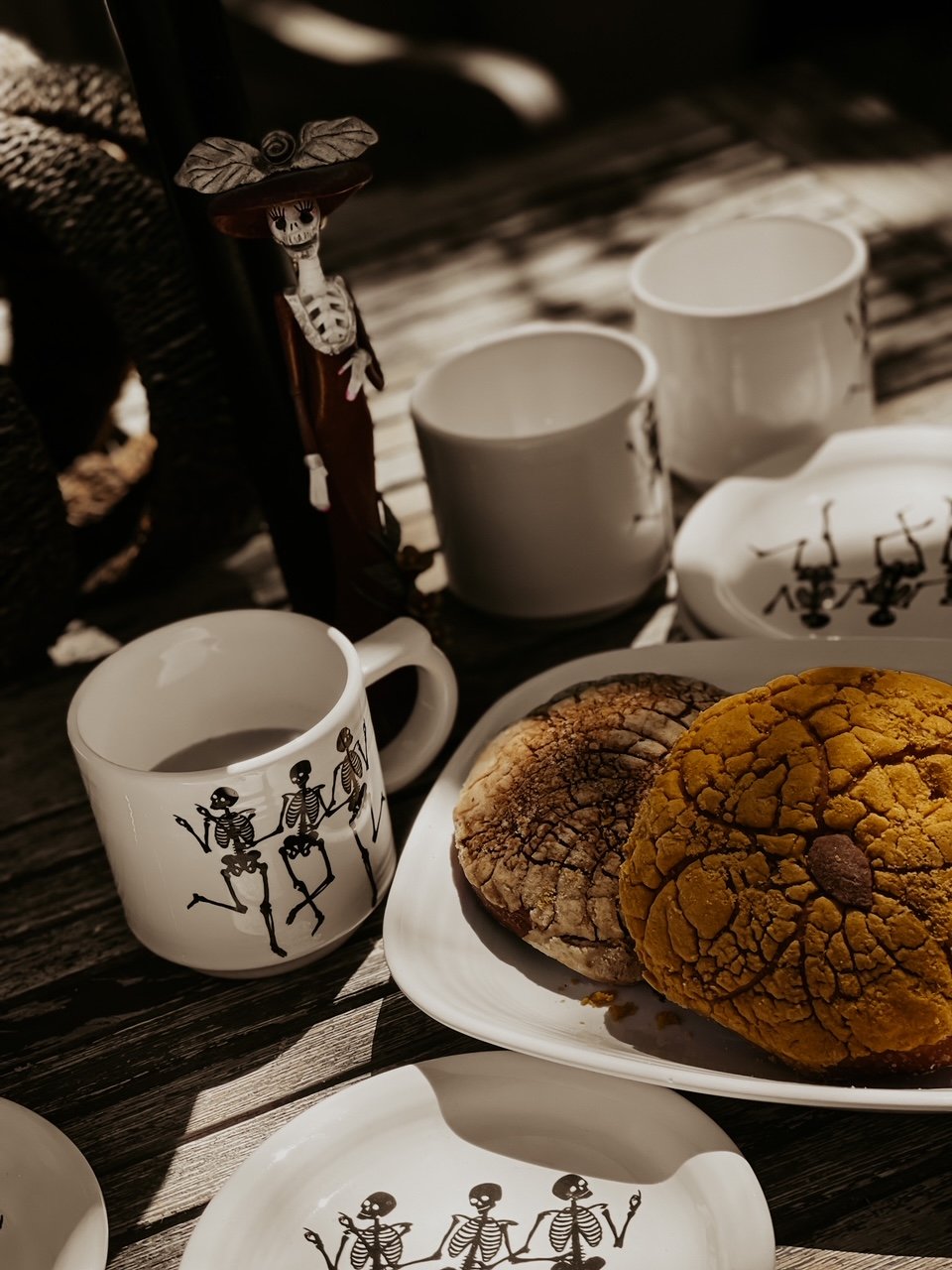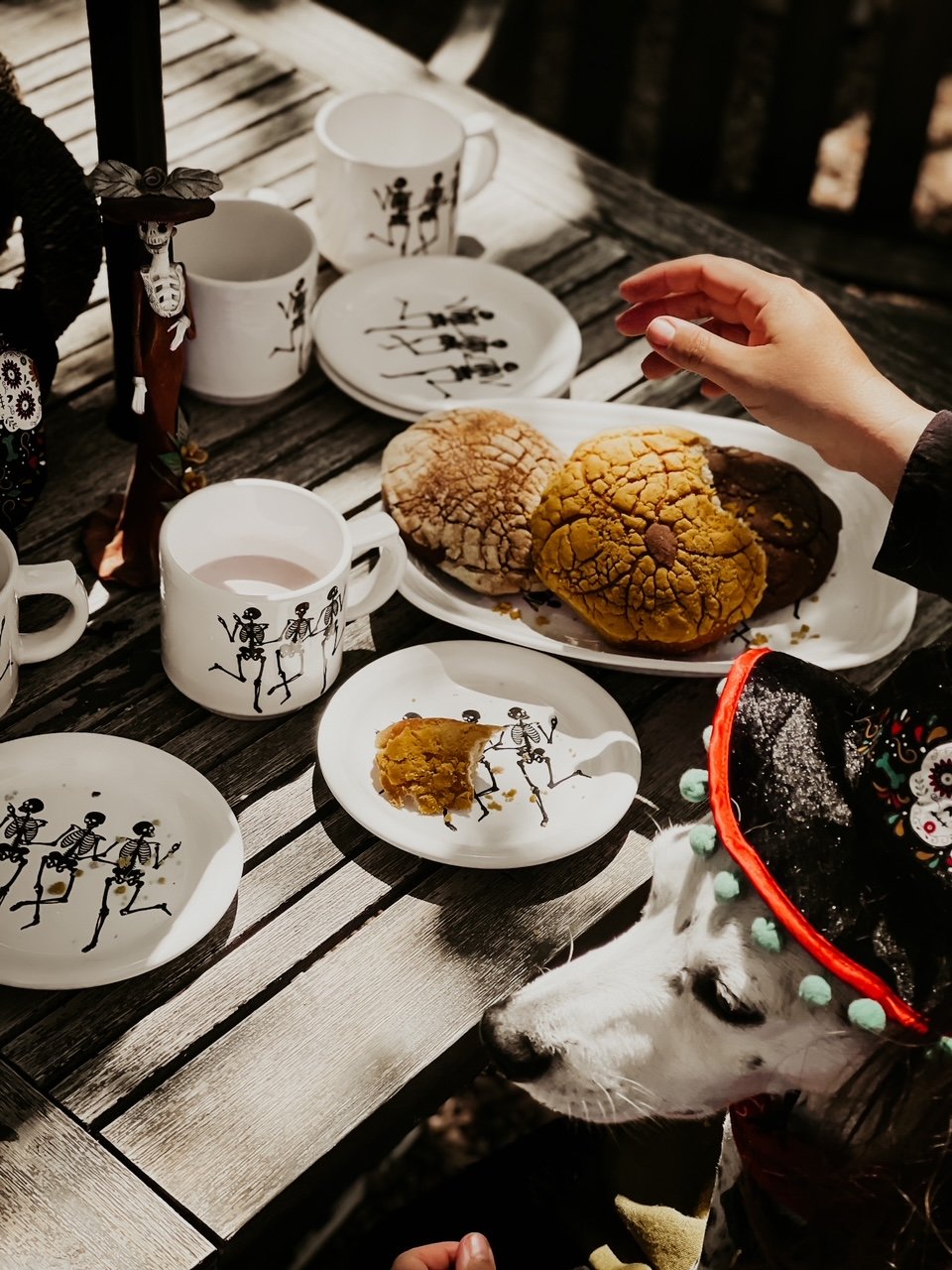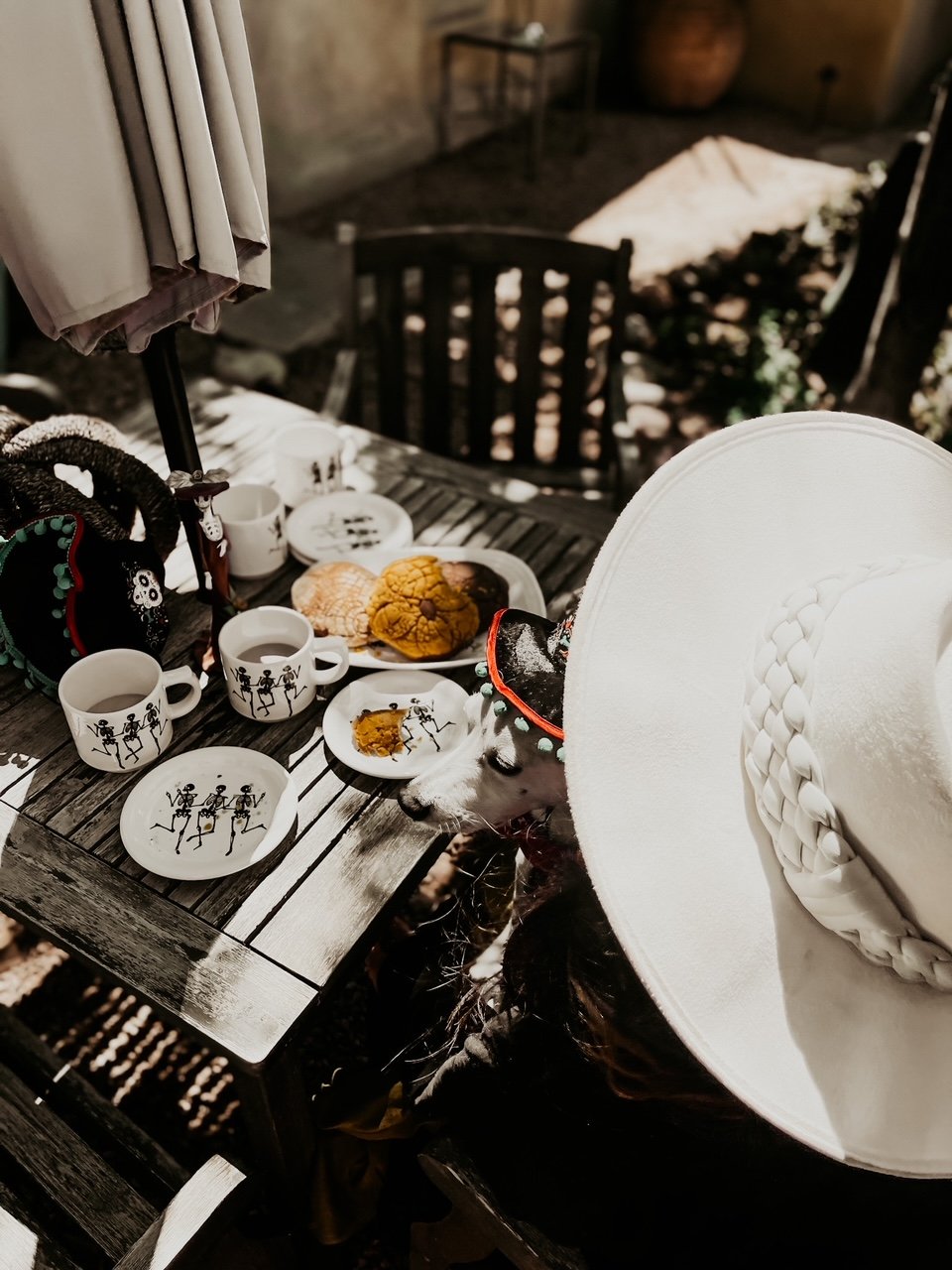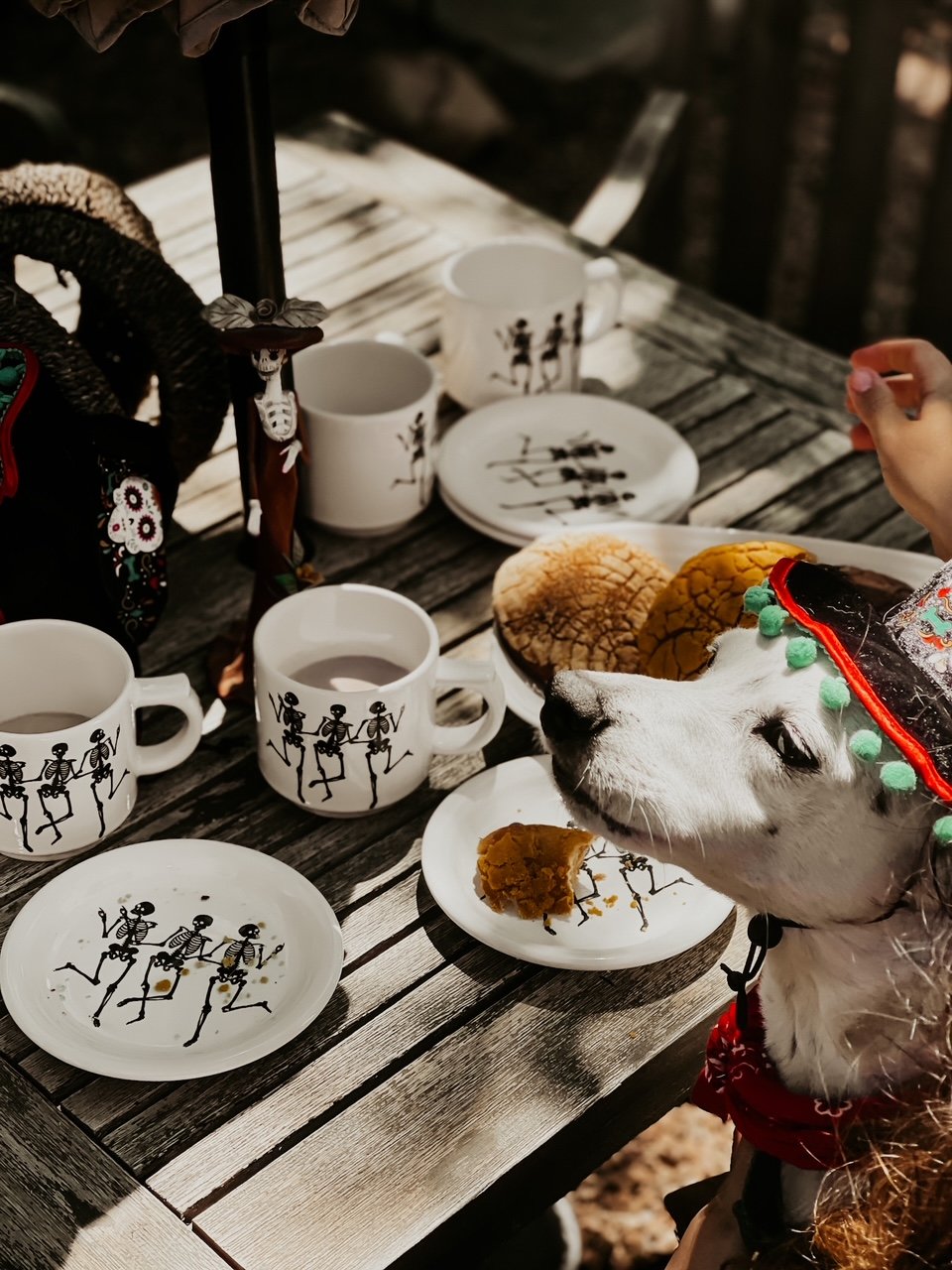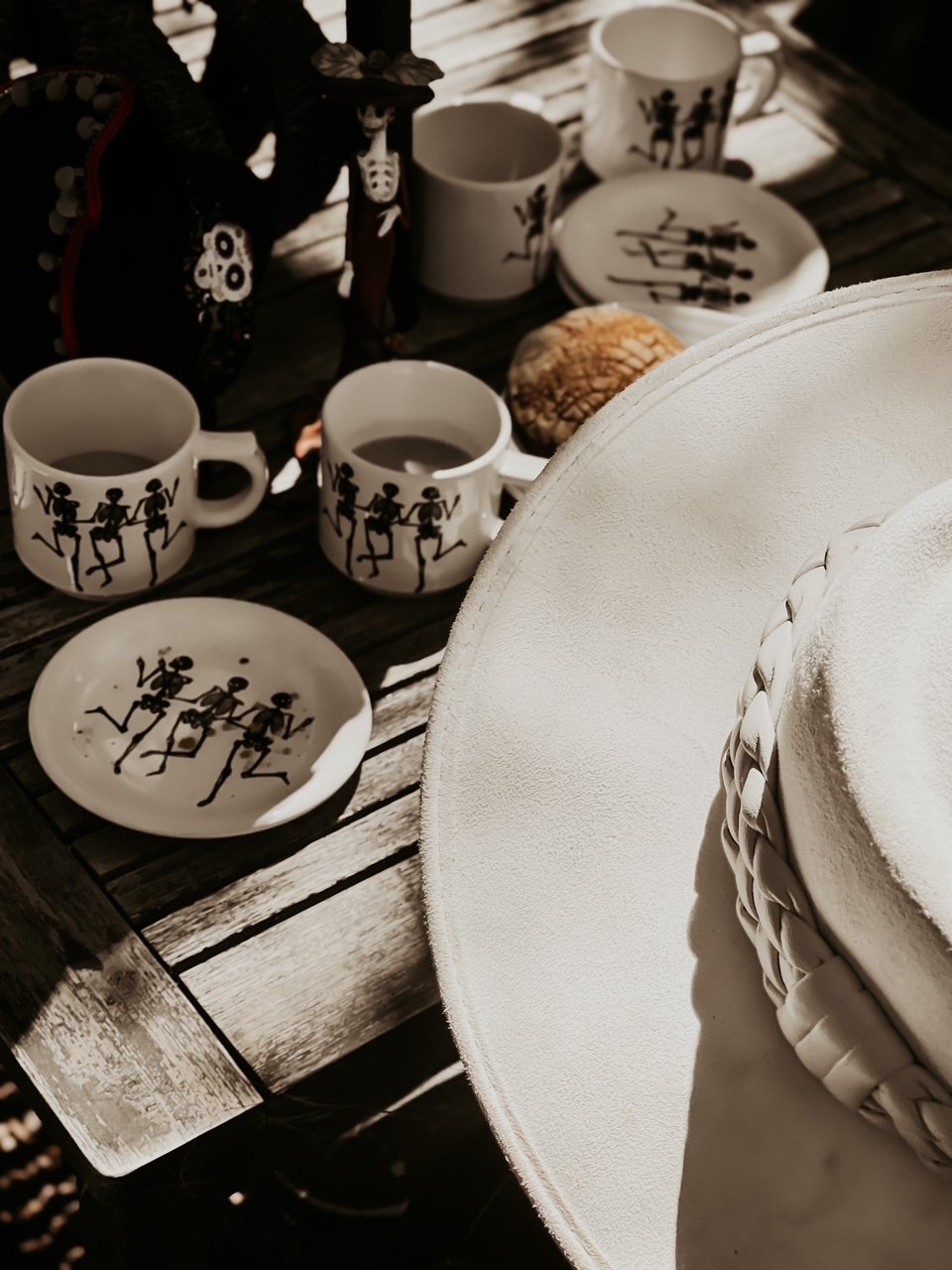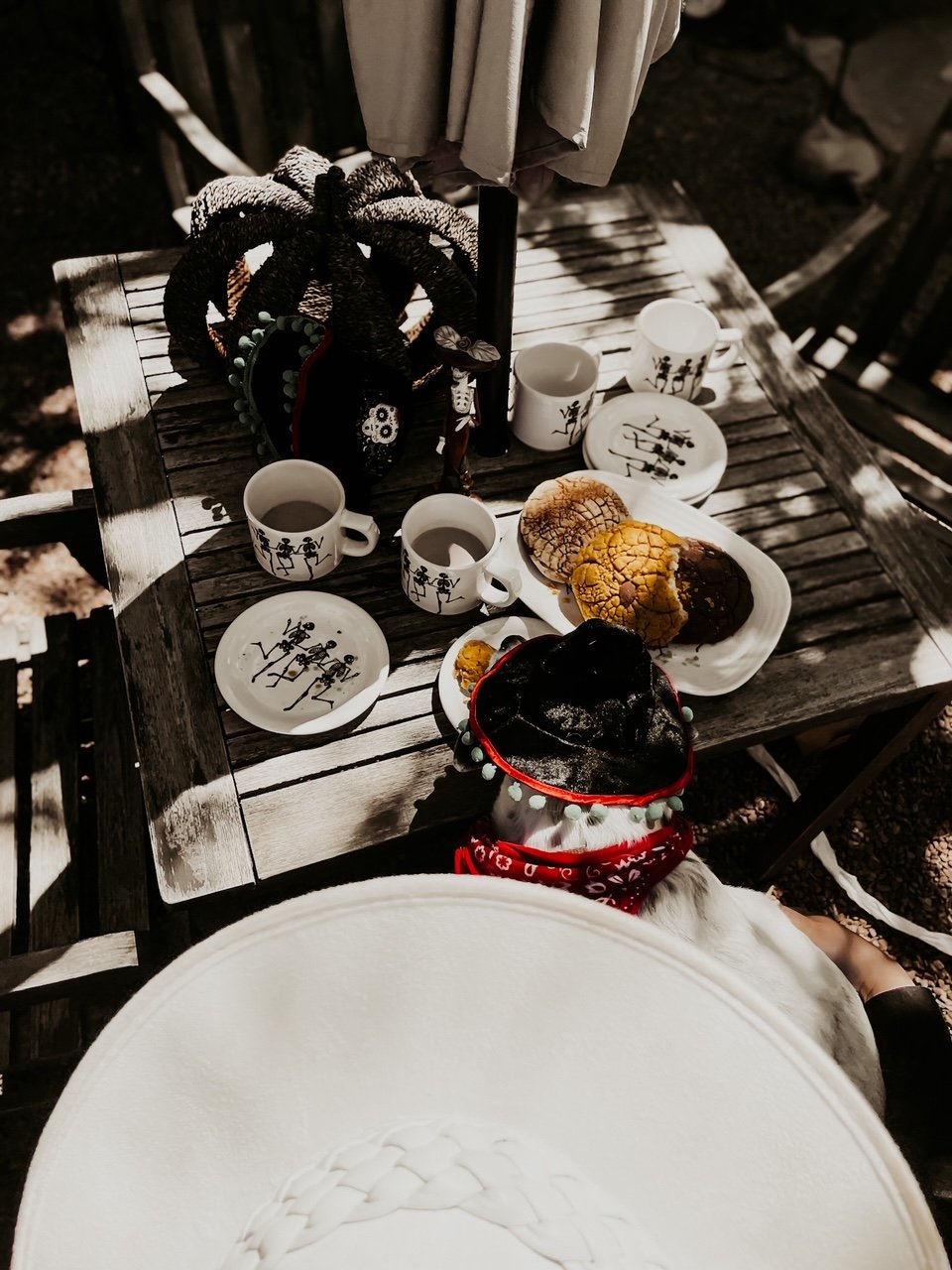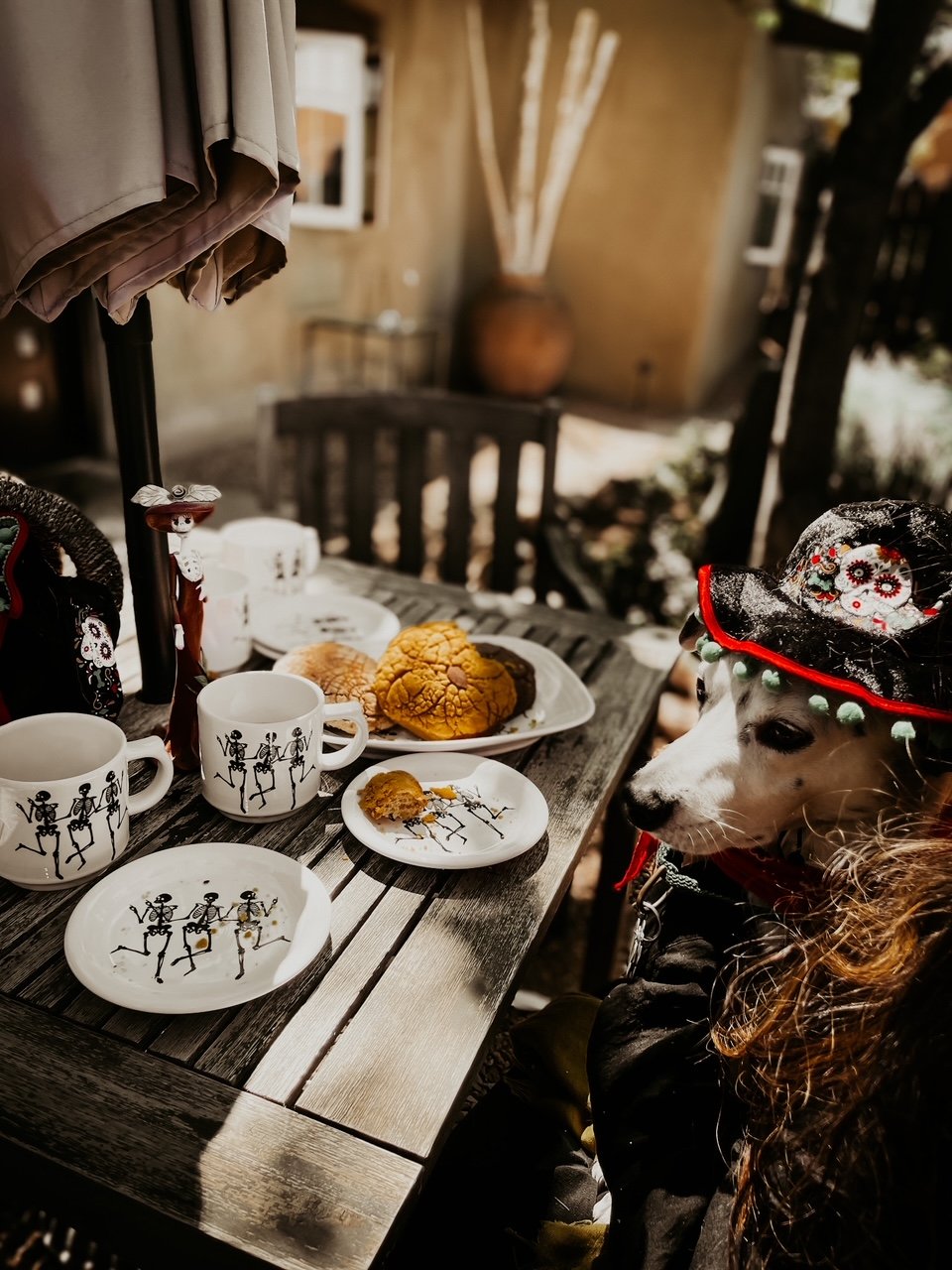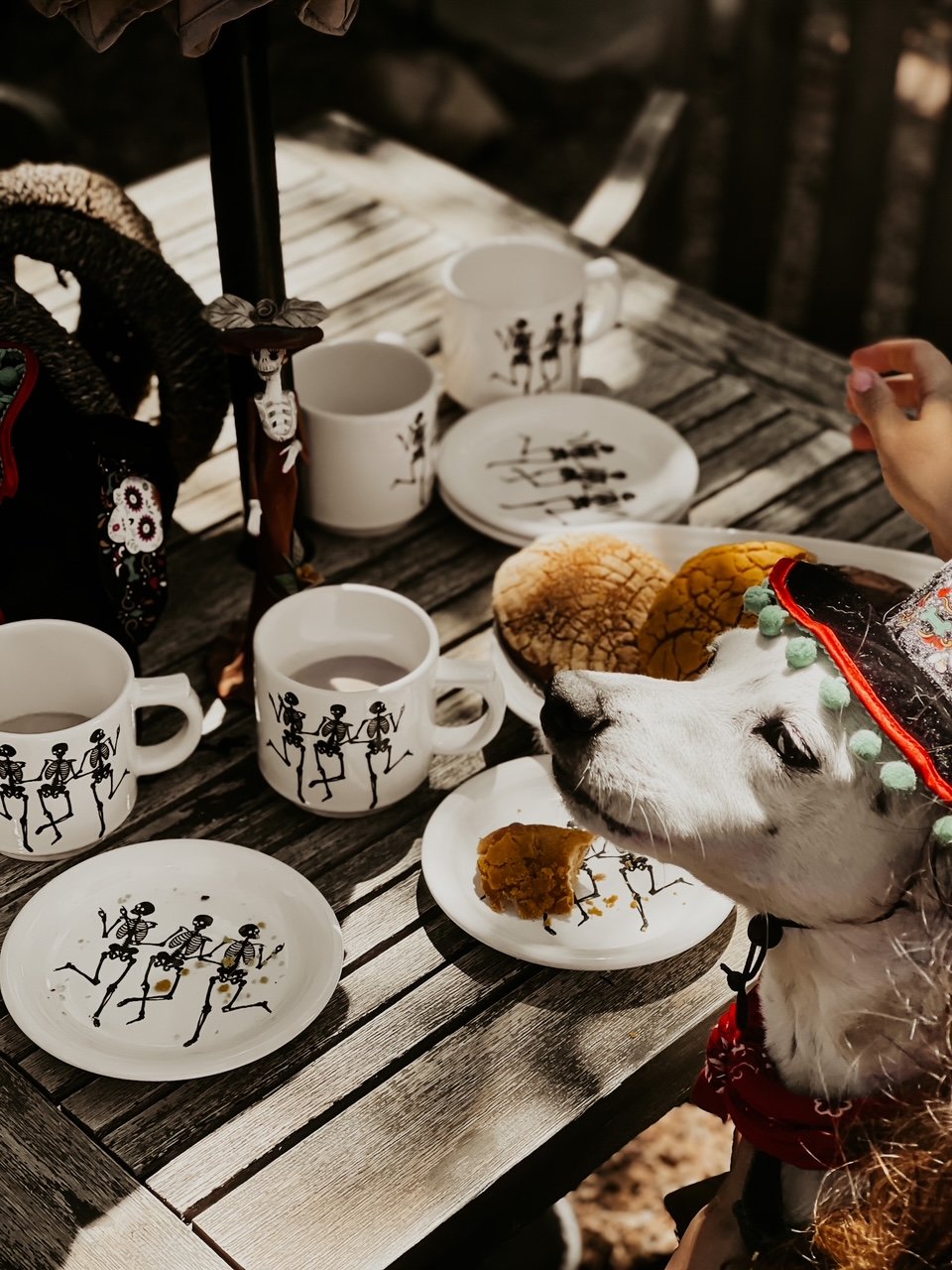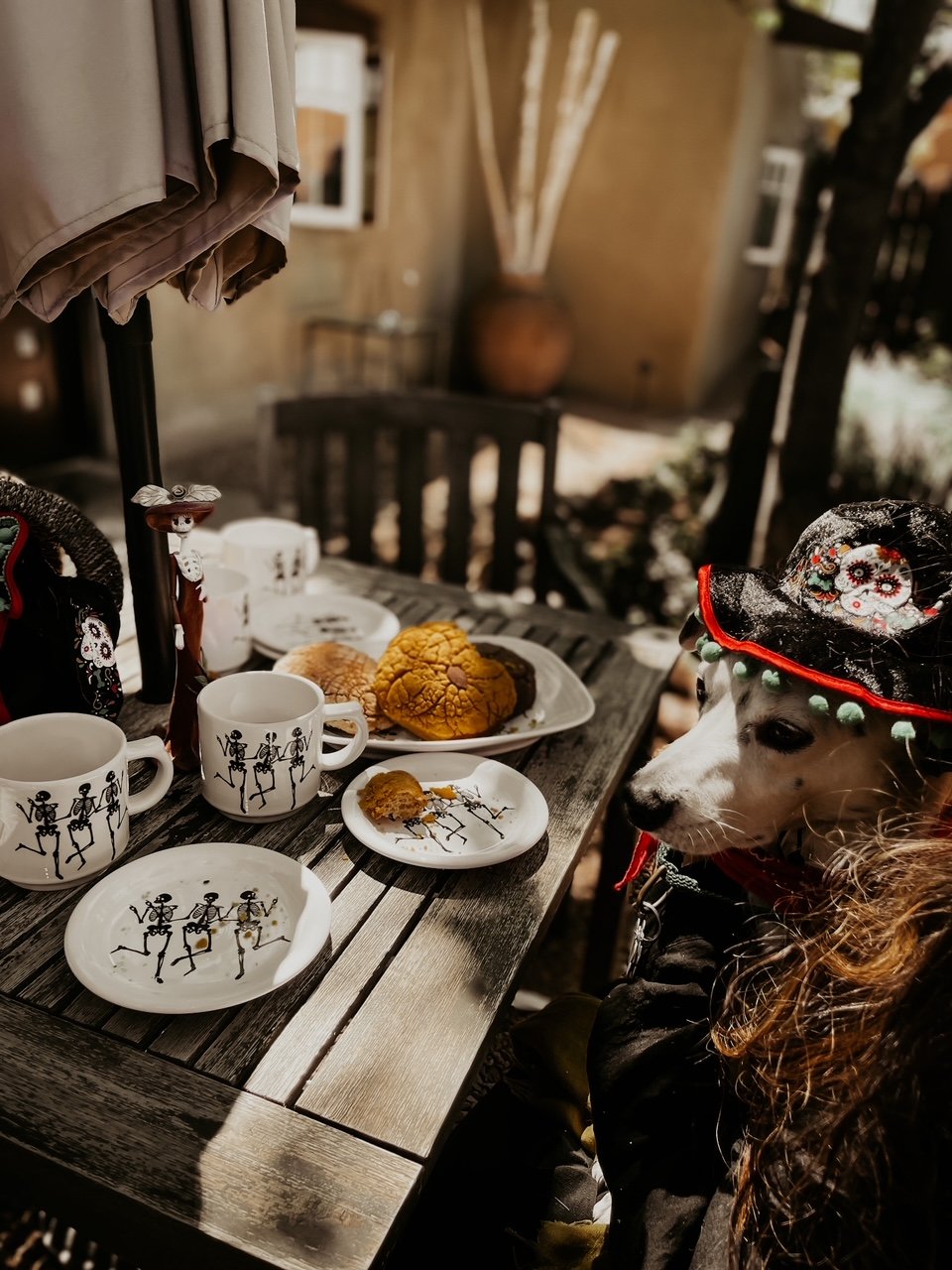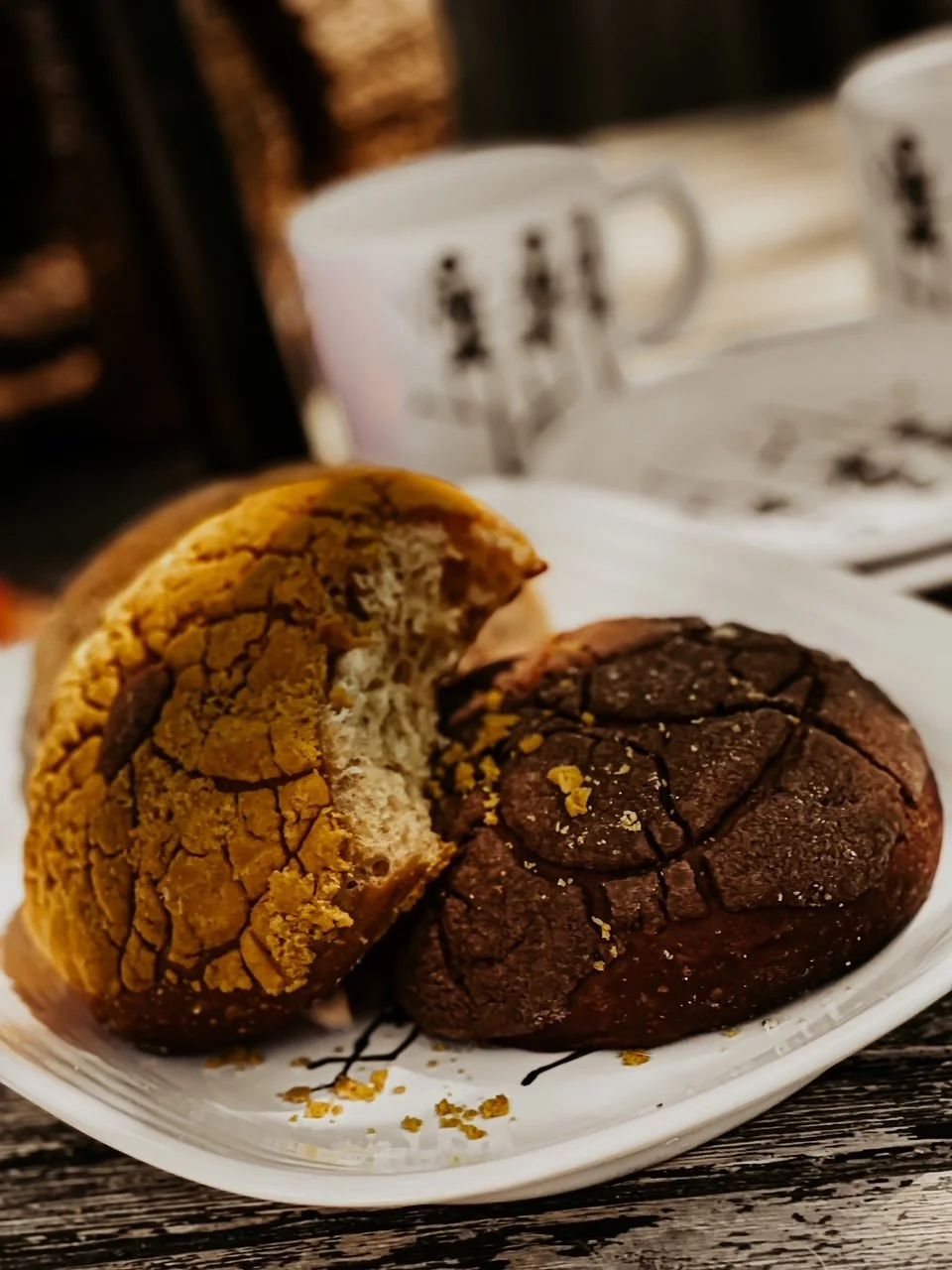Dia De Los Muertos Tablescape
Happy September 1st!!!!!!!!!!!!!!
If you’re looking for some Dia de los Muertos inspiration you’ve come to the right place. The Day of the Dead or Dia de los Muertos is a Mexican holiday in which loved ones that have passed away are remembered, honored and celebrated. A very important part of this holiday which is celebrated in many Latin American countries is the significance and importance of food.
El Dia de los Muertos is celebrated on November 1st and 2nd and on that day altars are built for family members who have died. On those altars, families place the photos of loved ones along with an array of different things from candles and sugar skulls as well as pan de muerto and that person’s favorite foods which are placed as ofrendas on the altars.
Getting so excited for Dia de los Muertos!!! I mean just look at these hats on the boys!!!!! And so in love with my newest La Catrina figurine that I just purchased here in Santa Fe! La Calavera Catrina – the ‘elegant skull’ – actually! La Catrina was not Latin America’s first grand lady of the afterlife. This honour belongs to Mictēcacihuātl – the queen of the Aztec underworld of Chicunamictlan. Her role was to watch over the bones of the dead, and her presence was front-and-centre during any recognition of those who had passed on.
And where had those souls passed to? The belief amongst the Mesoamericans was that the dead make a journey that descends nine levels to the depths of Chicunamictlan. The ancients' view of death was not a mournful one: they saw it as a part of the cycle of life, and celebrated the departed by leaving offerings on makeshift altars, or ofrendas, that would assist them in their onward trials.
These ofrendas continue to be associated with Day of the Dead, which over the centuries also absorbed pagan and Catholic celebration customs – including the dates of the festival straddling both All Hallows Eve, All Saints Day and All Soul's Day. But the defining image of the modern festival would come later – and from an unexpected source.
Origins of an icon
The ingredients of the modern image of La Catrina were drawn together as recently as 1910 by the Mexican illustrator Jose Guadalupe Posada. Posada, who was born in Mexico in 1852, would create cartoonish lithographs and engravings to satirically illustrate political and societal issues; his work was frequently published in the Mexican press.
What drew these illustrations together and made Posada’s fame particularly distinctive was the sketches' central motif: Posada's figures, regardless of occupation, class or status, were represented with skulls for faces. These skull caricatures, or calaveras, would depict anything from national tragedies, to current events and figures, to historical incidents and literary characters. Posada's sketches were sometimes prophetic-apocalyptic, such as that published in 1899 depicting a volcanic eruption, the foreground scattered with a chaotic funerary scene of calaveras – including one rising from a grave.
The reduction of every person to bones, no matter of time, place, class or deed gave Posada's images a homogenising quality, the apparent message being ‘underneath, we are all the same’.
Combined with the darker implications of the skull, and Posada's illustrations became societal levellers of the bluntest kind. Published during a pandemic of the disease, the character of cholera in the 1910 sketch La calavera del cólera morbo (the calavera of the morbid cholera) is not a skull, and is rather a fantastical humanoid with the body of a snake. However surrounding ‘cholera’ are a dozen skulls, all depicted with the worldly effects of a range of occupations, from jewellers to tailors and blacksmiths, to book-keepers and judges. Again, the message was one of neutralisation: no matter which part of society you occupy, death kills all.
La Calavera Catrina
Posada's original sketch of La Calavera Catrina was made around 1910. It was designed to be a satire referencing the high-society European obsessions of leader Porfirio Diaz, whose corruption led to the Mexican Revolution of 1911, and the toppling of his regime. The original name of the sketch reflected this cultural appropriation adopted by certain members of Mexican society: La Calavera Garbancera, with some sources referring to the latter word as slang for a woman who renounces her Mexican culture and adopts European aesthetics. The later christening would also come from slang, with the word ‘catrin’ or 'catrina' often used to refer to a well-dressed man or woman, or ‘dandy.’
The image was later turned into a mural in Mexico City by Diego Rivera, which pictured a central La Catrina in an ostentatious full-length gown linking arms with Posada himself – and also Riviera's wife, the artist Frida Kahlo. The mural – Dream of a Sunday Afternoon in the Alameda Central – became a cultural treasure, and further amplified La Catrina's image in the national consciousnesses.
Festival Folk Hero
The adoption of La Catrina as the emblem of Day of the Dead today takes many forms – from the sugar skulls in every shop window to the makeup and dress exhibited by festival-goers everywhere, male and female, Catrin and Catrina. In many ways she ties together the times and their interpretation of death: her elegant dress suggests celebration, her smile – however inescapable – reminding us that there is perhaps comfort in an acceptance of mortality, and that the dead should be commemorated, not feared. That whoever you are, we all have the same destiny. And perhaps in a nod back to this culture's earliest beliefs, that the guardian of whatever comes after life takes a decidedly female form.
Are you a fan of this holiday too and if so….now’s the time to stock up on festive spooky dinnerware for all your fun parties! (see video here)
How perfect is this Trio of Skeletons collection from Fiesta Dinnerware ?!! ☠️ The stackable mugs are so festive and fun!! And you can shop the plates here too!
Fiesta Dinnerware has been made in the USA at its factory in Newell, WV since 1936. It comes in 14 colors and several decorated collections! It's lead free, plus dishwasher, freezer, oven, and microwave, proof and comes with a 5-year chip replacement warranty. Fiesta is available at www.fiestafactorydirect.com and most better department stores, plus independent retailers and .coms nationwide.
Can’t wait to see which fun collection you end up with for your spooky tablescapes!!!
And cannot wait to see what you serve!
I personally recommend Mexican hot chocolate and Conchas or pan dulce as I used to call this sweet bread when I was growing up !! This bread covered in sugar is a traditional food that is often shared with family during Dia de Muertos alongside some cafecito or champurrado. Melvin’s birthday is on November 1st and this is going to be the cutest little party set up for him! I just now need to find doggy pan dulce ! Reach out in my Instagram DM’s if you know someone who can help! 🐾 🐾 ( will be home in Tulsa by then)

